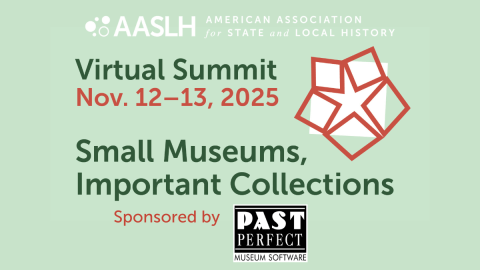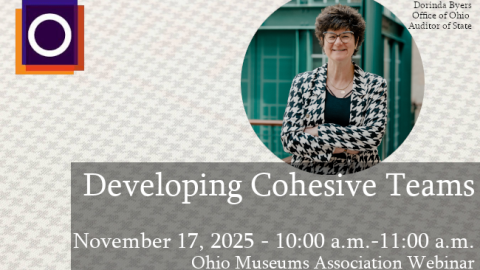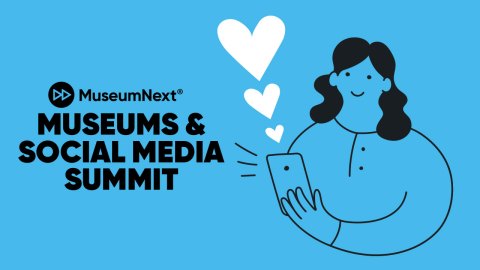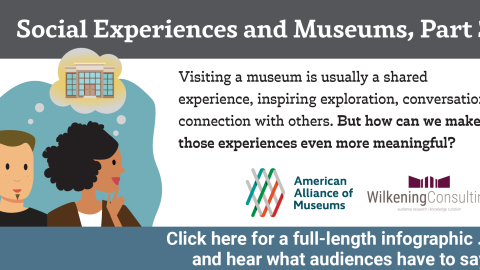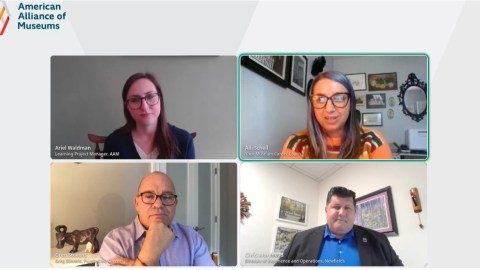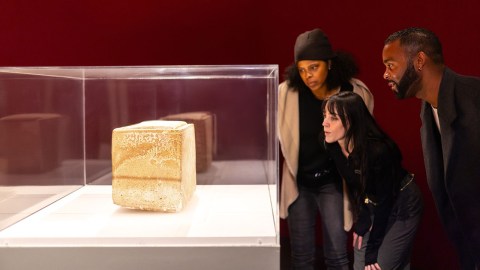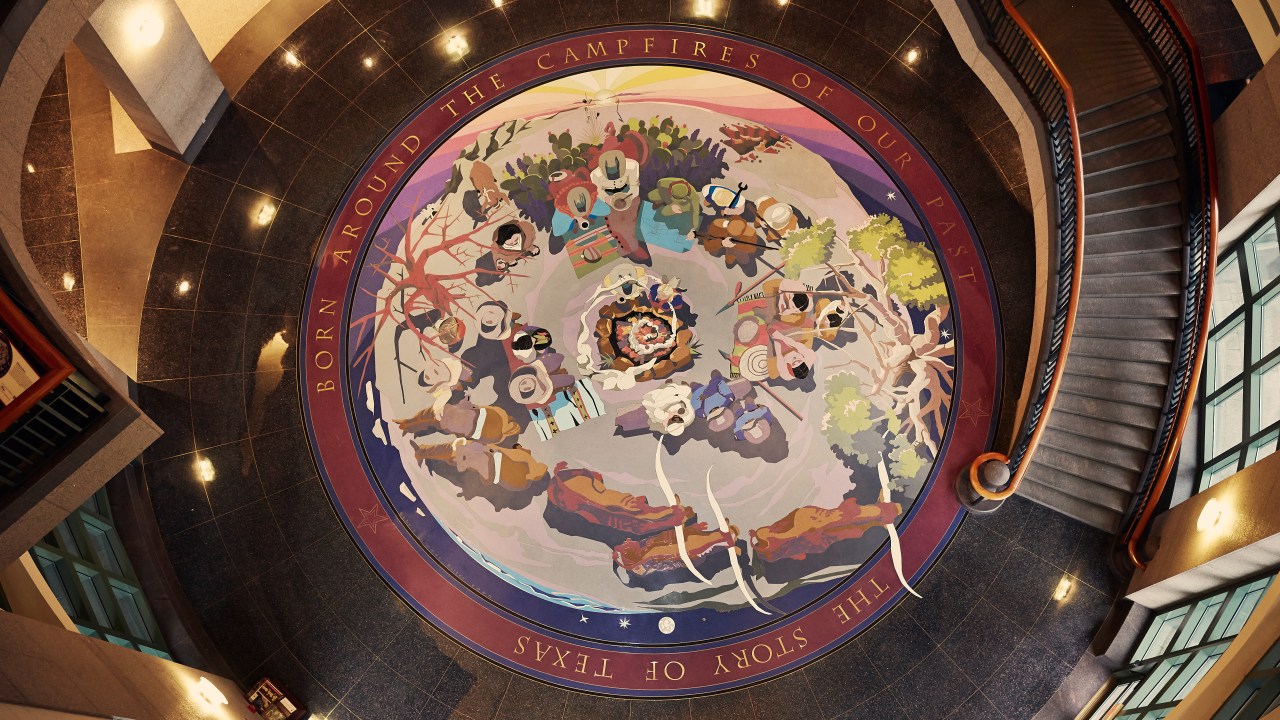
With the worst of pandemic disruptions behind us (we hope) some museums are using this as an opportunity to rethink their operations, rather than simply rebounding to the previous norm. COVID amplified the inequities between stable and precarious jobs and highlighted the stratification that has characterized museum work for many decades. Today on the blog, Margaret Koch, Director of the Bullock Texas State History Museum, tells us how she and her staff are using the time and space afforded by the pandemic pause to reshape hiring and staffing in order to increase staff diversity, and provide pathways for staff at any level to advance within the museum.
–Elizabeth Merritt, Vice President, Strategic Foresight and Founding Director, Center for the Future of Museums, American Alliance of Museums
As if dealing with an earth-shattering pandemic were not enough, many museum leaders have seen the headlines and felt the pain of the “Great Resignation,” terminology first attributed to Anthony Klotz at the Mays Business School of Texas A&M University and quickly grasped by media outlets such as NPR, The Washington Post, The Atlantic and many others. While the pace of this phenomenon may have picked up speed as a result of people re-assessing career goals, life-professional balance, etc., I don’t see it as a new development that inexplicably appeared during the pandemic. I view it as a situation decades in the making. From my perspective, it is of our own unfortunate design as for years we low-balled salaries in the field, hired for the organizational structure we wanted to maintain rather than the one we said we aspired to, and threw “everything plus the kitchen sink” into job descriptions. The flight of committed, experienced staff members through the Great Resignation amplifies our own past practices (for which there be many reasons, but ones we should admit we choose not to address), and the stress of dealing with a devastating crisis with a very real human toll. As we as administrators reflect on the losses we have witnessed and personally experienced, we also have the opportunity to shape a stronger internal, equitable environment in which diversity in leadership can thrive, and emerging leaders receive the tools and confidence they need to succeed in any aspect of their chosen career paths.
At the Bullock Texas State History Museum, we have been wrestling with how to retain experienced staff and attract qualified applicants, while trying to be cognizant of and responsive to the communities we serve throughout Texas in both human resources and programming. A significant challenge for us is that, although a state institution established by legislative action in the late 1990s, our annual operational budget is primarily funded through earned revenue, rather than state appropriation. Until a few weeks ago when a fund for maintenance and capital projects was passed by the state legislature, we had no endowment in our 20 year existence. Combined with concerns about equitable compensation in a competitive market like Austin, Texas, we find ourselves challenged to rethink and strengthen key elements of our business model, including pace of work and benefits to employment. These issues are critical to our financial sustainability as well, since it is the excellence of our team that makes service and relevance to our communities possible.
Currently, only 23 positions of a fully staffed 90 are funded by the state. Despite that, unlike many other cultural entities that had to temporarily close to the public, the Bullock did not eliminate positions when the pandemic began. Instead, we depleted our trust fund to keep staff on payroll, believing that their ability to pay rent and put food on the table was important for their own health as well as the community’s. First and foremost this decision was driven by concern for our staff members’ welfare. The longer-term advantage to this decision related to our financial stability; by caring for staff, we would have qualified people in place when it was safe to reopen. The state hiring process is complex and lengthy, and we did not want to take a chance of losing the experienced, dedicated people we relied upon to get us up and running. However, as some people decided to retire, move closer to families, rethink and realign professional goals with personal ones, or search for higher-paying jobs, we held off rehiring for their positions, which left about 22% of our positions open. While open positions resulted in delays and reprioritizing where ever possible and admittedly longer days for leadership, in rebuilding our team we are taking the opportunity to restructure positions and hiring goals to increase the diversity of our staff and provide pathways for advancement.
Amidst the pandemic-induced postponement of projects and deadlines, and reduction in the days open to the public, we dedicated time for evaluation of what we were doing well, and what required improvement to better serve our mission. Each department examined itself in relation to institutional mission and its role in fiscal responsibility. During this process, we identified our staff as one of three primary institutional stakeholders, along with educators/students and museum members, and expanded our definition of leadership to include mid and lower-level managers. This has begun to improve the multi-faceted communication process. By providing clearer conduits for those who may not be supervisors, but who nevertheless have a critical mission-focused role to play, staff stakeholders recognize we value and need their contributions for creating a more equitable internal as well as external environment.
Our new fiscal year began on September 1, 2021, and our finances have stabilized for the present due to being the extremely fortunate recipient of federal COVID relief funds. Now we are working on changes to our internal staff systems that support our goals to diversify hiring and create pathways for staff advancement. These include:
- Examining and editing each job description prior to posting to eliminate language or unnecessary qualifications that may exclude applicants.
- Continuing to invest in leadership skill-building at all levels, a process begun with a grant from IMLS’ Museums Empowered
- Promoting from within where it makes sense to do so (currently at a rate of about 25% within the agency as a whole).
- Developing “master classes” for staff on a wide variety of topics that will include both technical skill building, wellness, and management training with an emphasis on better communication skills.
- Researching how to create and fund hybrid entry-level positions that are 50% visitor service-related and 50% apprenticed to another department such as exhibitions, education, or communications and development.
- Empowering a cross-departmental DEAI committee to hold ourselves accountable for continued growth.
I would be remiss if I didn’t point out a few of the challenges to our evolution. When you have a good team in place, but one that identifies as mostly white, to diversify staff you either need funds to create new positions or wait for positions to open through voluntary turnover. We are in the latter category. New positions are difficult to add without the added revenue, and revenue streams are still suffering from the effects of the pandemic. In a culture of promoting from within, we run the risk of staying within the same staffing demographic, which in turn makes it more difficult to foster a team aware of and willing to deal with their biases. Learning to communicate more respectfully but honestly means staff must be prepared to hear opposing perspectives and participate in uncomfortable conversations that call for self-reflection. We don’t like critiquing or even gently confronting our colleagues and asking for change, even if doing so might fix a problem. Our salaries do not yet, (and honestly may never), match the private/corporate sphere and the cost of living in Austin is rising exponentially. The multi-stepped hiring process within a state institution is often tedious and time-consuming. Even as we offer good health and retirement benefits, candidates may not be in a position to wait for the process to be completed. For all these reasons, we often lose strong candidates to other entities and cities. And lastly, it is difficult to create the hybrid positions we want to use to strengthen professional development because such a classification within the state system of employment does not currently exist.
In conclusion, we are on a journey to fight against complacency and sliding back into old habits. The potential rewards though, strike to the very heart of what it means to be a healthy place. Despite the challenges, I think it is possible for museums of all sizes to become stronger as cultural institutions in service to their constituents. Connecting with accomplished museum leaders during the pandemic across the country through virtual gatherings gives me hope, because I see that our field is fostering many creative and sustainable ideas and practices. Our decision to renew investment in the team at the Bullock, we hope, will have positive, lasting effect on how we serve our communities, so that every individual is able to find themselves in the Story of Texas now and into the future. I also hope that those of you in private and municipal institutions share how you are shaping and dealing with the issues before us. For administrators such as myself who are closer to the end of our museum careers than we are to the beginning of them, we do have a responsibility in words attributed to Georgiana Ross Baker, the mother of human rights activist Ella Baker, to “lift as you climb.”
